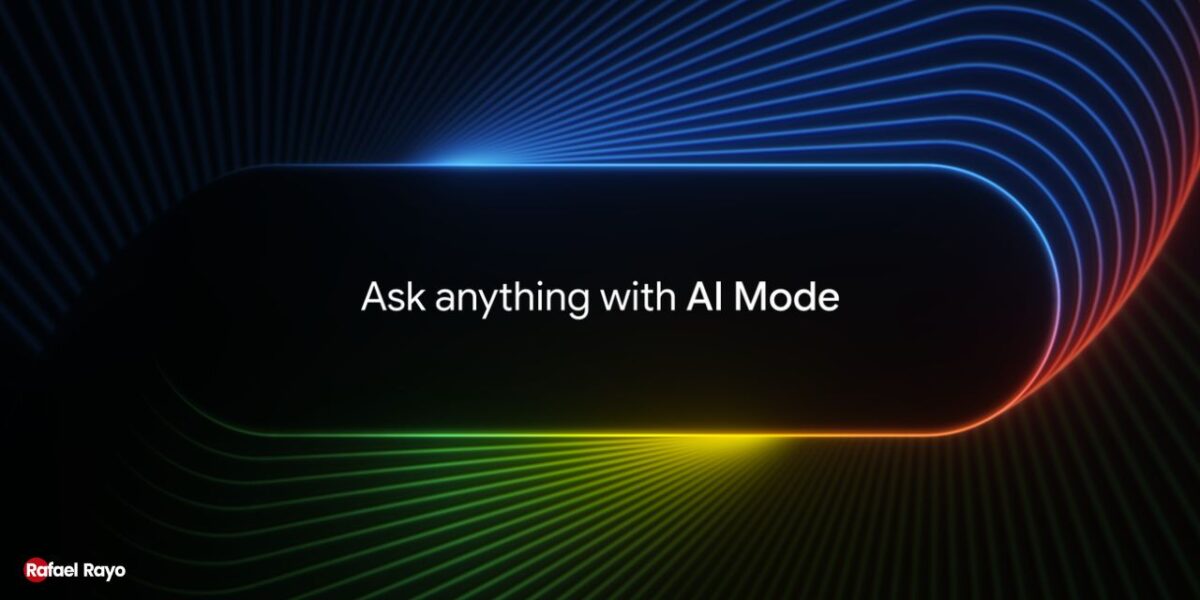Google has once again reshaped the digital landscape with the launch of Google AI Mode, a groundbreaking conversational search experience built right into its search engine. Rather than simply returning a list of links, Google now delivers AI-generated responses that combine information from multiple sources in a single, cohesive answer.
This shift isn’t just good news for users—it also opens up new strategic opportunities for digital marketers to increase visibility, build trust, and convert users through smarter content.
In this article, you’ll learn:
- What Google AI Mode is and how it works.
- The key benefits for users.
- How to adapt your digital marketing strategy to take advantage of this shift.
What is Google AI Mode?
Google AI Mode is a new AI-powered search experience that offers conversational, step-by-step answers instead of a traditional list of search results. It’s powered by Google’s advanced Gemini 2.5 model, which breaks down complex questions into sub-queries and fetches the most relevant answers to compile a complete response.
Key features:
- Conversational search: Ask follow-up questions and refine your query.
- Multi-step answers: Ideal for complex decisions (e.g., comparing products, planning trips).
- Visual integration: Includes images, videos, and shopping suggestions.
- Source links: Responses cite sources and related websites.
- Multimodal input: Supports voice, text, and image-based queries.
Currently available in the U.S., India, and other select markets, AI Mode is gradually expanding to more regions.
What are the benefits of Google AI Mode for users?
For everyday users, Google AI Mode offers faster, clearer, and more personalized access to information.
1. Faster answers
No need to scroll through multiple websites—AI Mode summarizes key insights for quick understanding.
2. More accurate results
By interpreting the context and intent behind queries, users receive better-aligned responses.
3. Easier interaction
The conversational format makes it easy to follow up or ask additional questions.
4. Smarter decision-making
The AI pulls from various sources to provide pros and cons, comparisons, and key details—perfect for users making informed choices.
How Google AI Mode is changing digital marketing
Google AI Mode is a game-changer for SEO and content marketing. It’s not just about ranking anymore—it’s about being selected by the AI as a trusted source.
This marks the shift from Search Engine Optimization (SEO) to Answer Engine Optimization (AEO): the art of optimizing your content to appear in AI-generated answers.
Here’s what’s changing:
- Fewer organic clicks: Users get answers without clicking on links.
- Greater competition for visibility inside AI summaries.
- Higher priority for trustworthy, well-structured content.
- Opportunity to appear directly in AI responses.
How to take advantage of Google AI Mode in your marketing strategy
Here are proven, actionable steps to prepare your business and blog for the new era of AI-powered search:
1. Optimize your content for AEO (Answer Engine Optimization)
Google AI Mode favors content that delivers clear, direct, structured answers.
Tactics:
- Use headers in question format (just like this article).
- Write FAQ sections in your blog posts.
- Break down your content using bulleted or numbered lists.
- Offer brief summaries at the top of your articles.
Example AEO-friendly structure:
How can small businesses use AI in marketing?
Small businesses can use AI tools to:
- Automate content creation.
- Analyze customer behavior.
- Optimize ad targeting.
2. Strengthen your E-E-A-T (Experience, Expertise, Authority, Trust)
Google’s AI selects responses from high-authority, trustworthy sources.
Boost your authority by:
- Adding author bios and credentials.
- Getting backlinks from reputable sites.
- Including real-world data, testimonials, and case studies.
- Managing your online reputation on Google Reviews, LinkedIn, etc.
3. Use structured data and schema markup
Add structured data (Schema.org) to help Google’s AI understand and index your content more precisely.
Recommended schema:
FAQPage– for FAQs and Q&A content.HowTo– for tutorials and guides.Product– for product listings with pricing, ratings, and availability.Organization/Person– to establish your brand or expert identity.
4. Focus on solving real problems
AI Mode is designed to solve the user’s intent, not just deliver content.
Strategy:
- Research real questions your audience asks (Google Autocomplete, Reddit, Quora, forums).
- Create content that answers those questions directly.
- Structure your posts around pain points, comparisons, and step-by-step solutions.
Great blog title examples:
- “How to choose the right CRM for a small business”
- “The best marketing tools for freelancers in 2025”
- “What is the difference between SEO and SEM?”
5. Don’t rely solely on Google for traffic
If AI Mode reduces organic clicks, your strategy must include diversified traffic sources:
- Grow your email list and send regular newsletters.
- Repurpose your content for Instagram, LinkedIn, YouTube Shorts.
- Publish in niche communities and guest blogs.
- Build brand loyalty so users return directly to your site.
6. Tap into AI-powered advertising
Google has started displaying ads inside AI Mode responses. As this feature expands, brands can:
- Show up inside contextual answers (e.g., product suggestions).
- Target users based on intent and query structure.
- Create more personalized campaigns aligned with AI-generated results.
Example:
If a user asks, “What’s the best web hosting service for e-commerce?”—your Google Ad could appear within the AI’s recommendation box.
7. Measure, improve, repeat
Monitor performance and adapt your strategy with data-driven decisions.
Tools to use:
- Google Search Console: Look for impressions from AI-powered queries.
- GA4: Track conversions, user behavior, and acquisition sources.
- Semrush or Ahrefs: Spot AEO opportunities and keyword performance.
Quick checklist: Is your content ready for Google AI Mode?
✅ You use headers with clear questions
✅ You answer real user queries in the first paragraph
✅ Your content includes bulleted lists and concise takeaways
✅ You use FAQ schema and structured data
✅ You provide original, high-value insights and examples
✅ You’re building trust through testimonials and credentials
✅ You promote your content outside of Google
Final thoughts: Be early, be smart, be visible
Google AI Mode is not just a trend—it’s a new standard in search behavior. Brands and marketers who embrace AEO and adapt their content early will gain an unfair advantage in visibility, trust, and conversions.
Start by reworking your top-performing posts to match this structure. Then, build new content that anticipates the kinds of complex, real-world questions your audience is already asking Google.
In the age of AI search, the brands that educate and guide are the ones that win.
Need help getting your site ready for AI-powered search?
We can help you:
- Audit your blog and website for AEO-readiness.
- Rewrite or restructure existing articles for AI Mode.
- Create a long-term content strategy built around visibility and conversions.
👉 Let’s turn your content into the answer users (and Google AI) are looking for.








